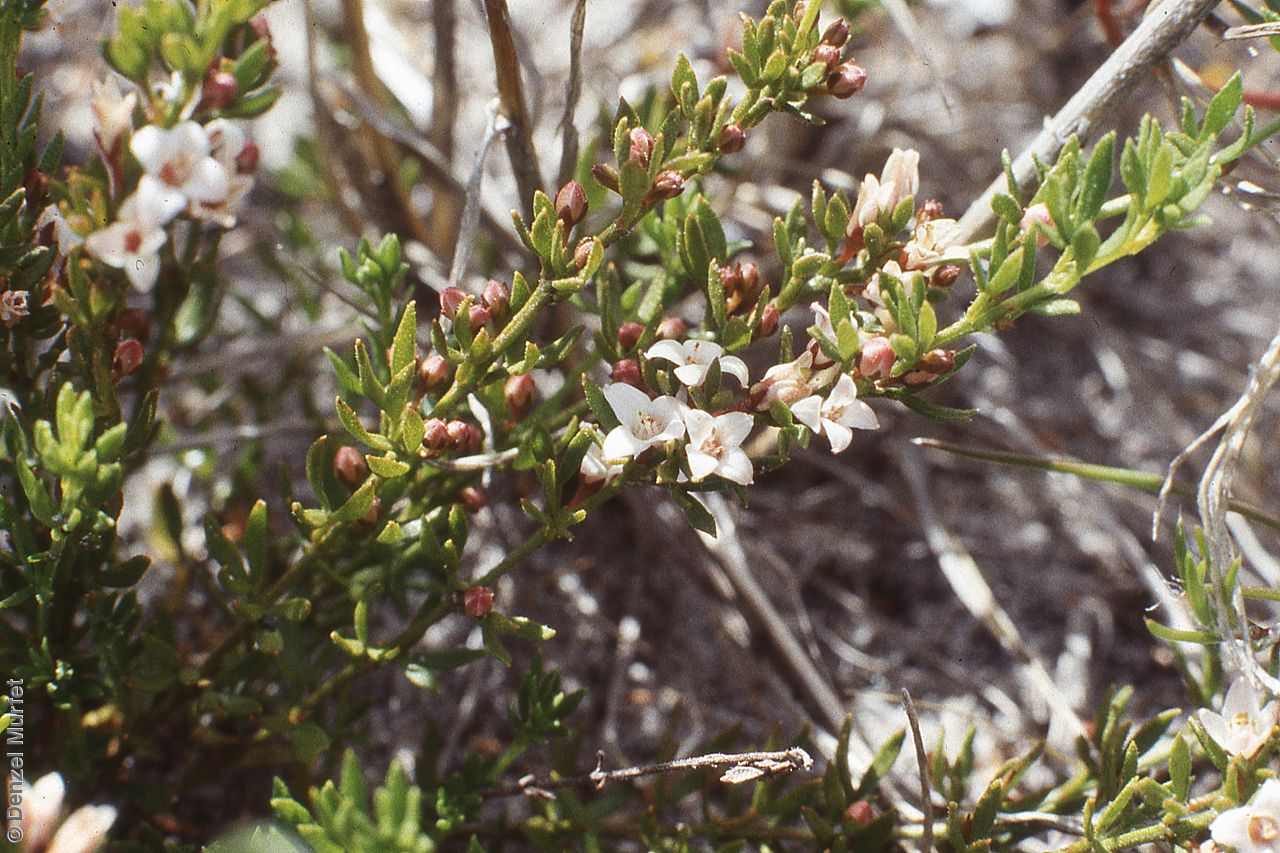
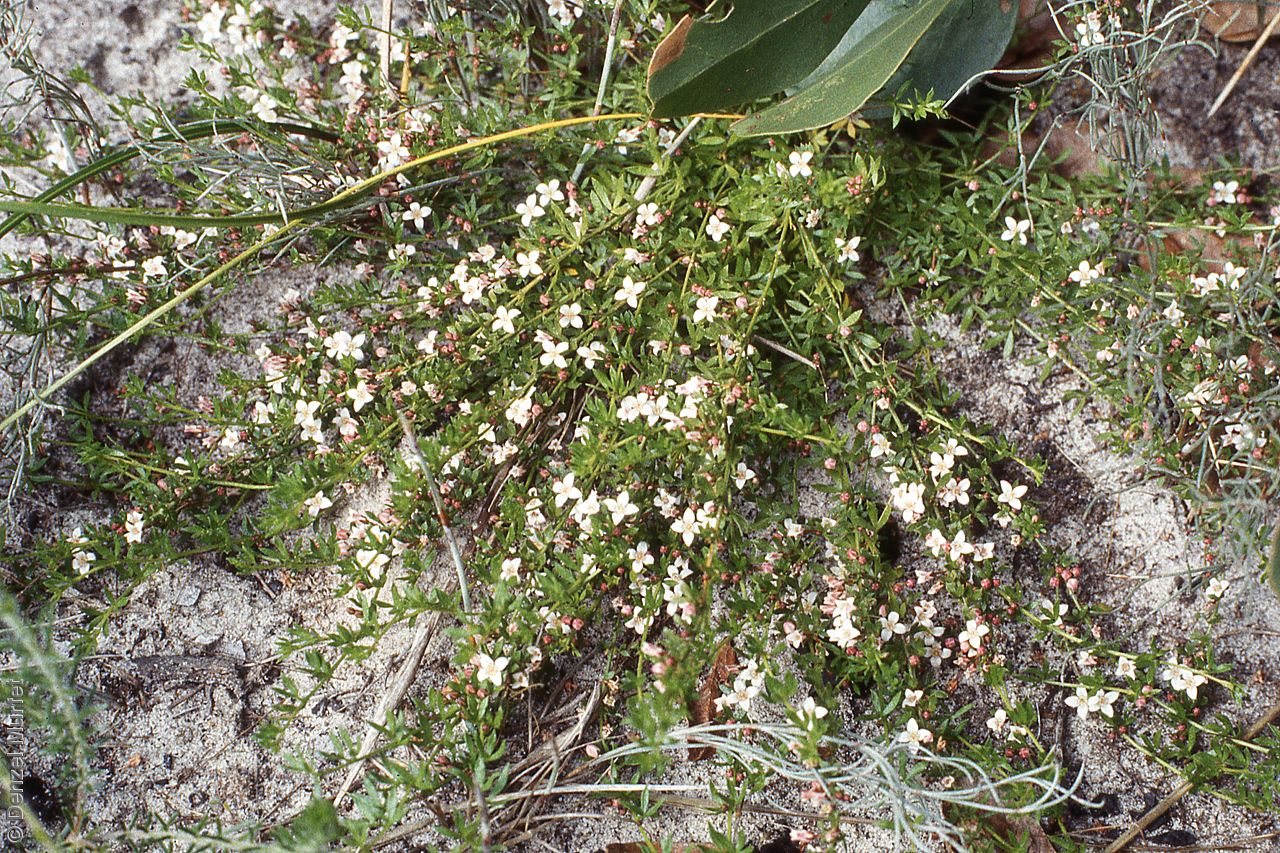
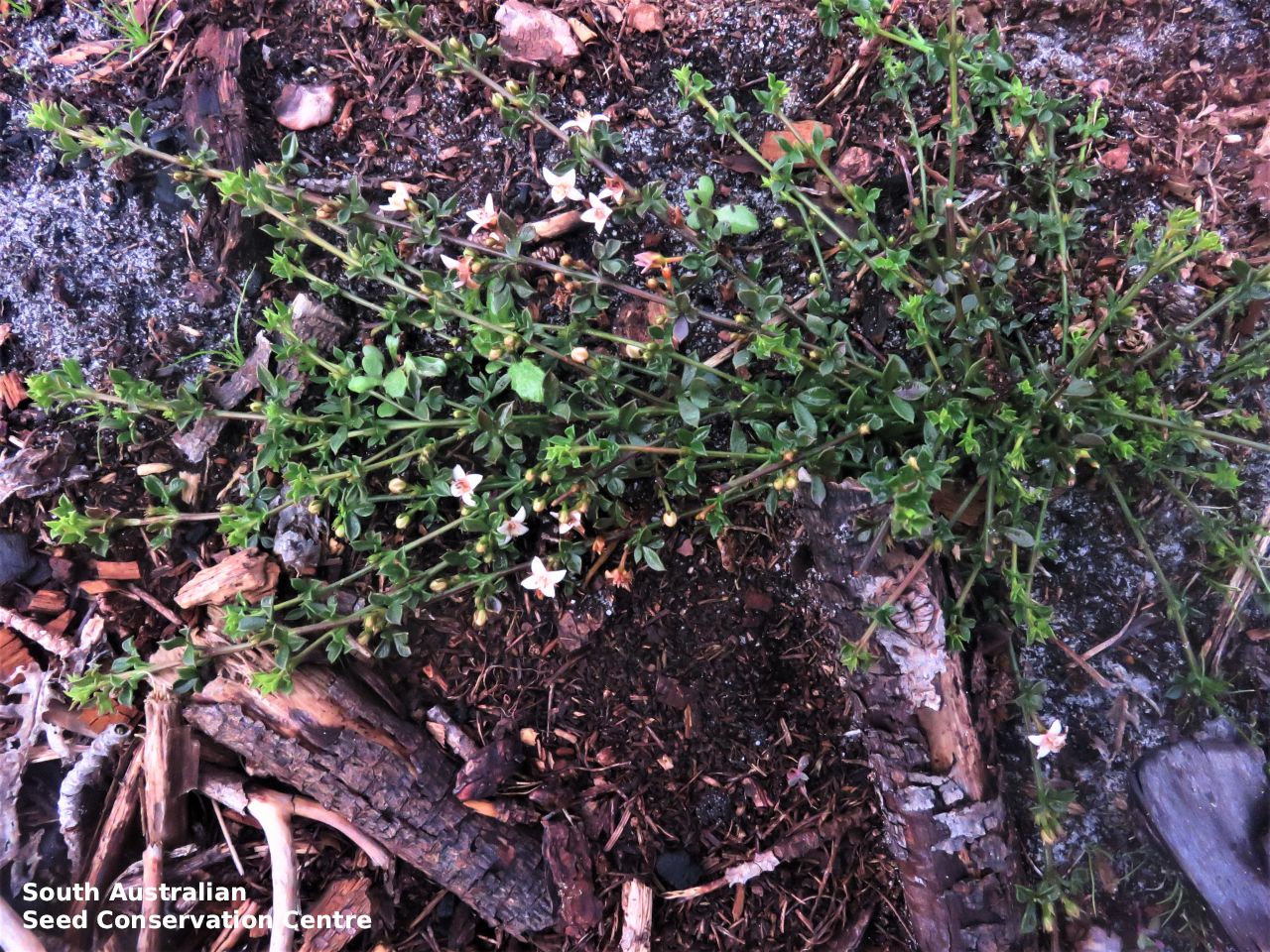
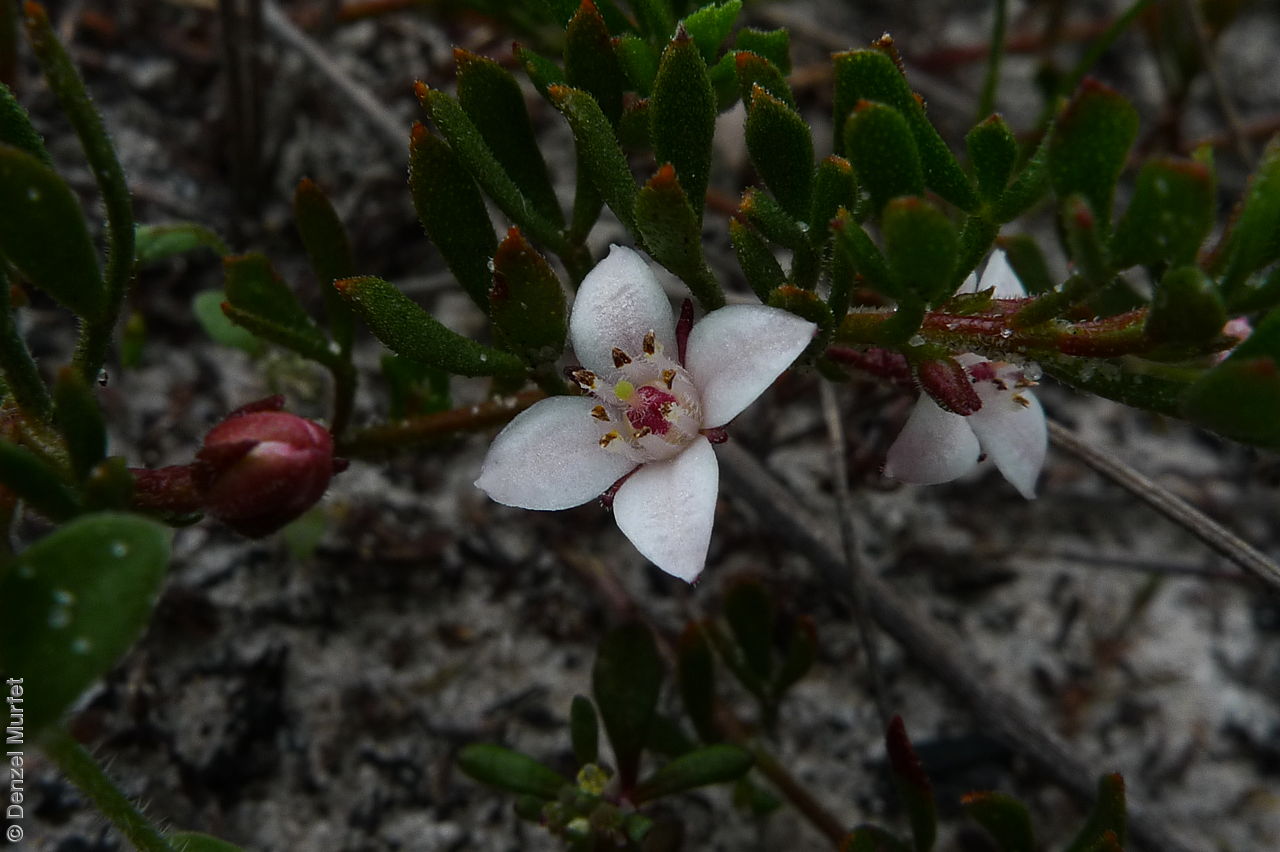
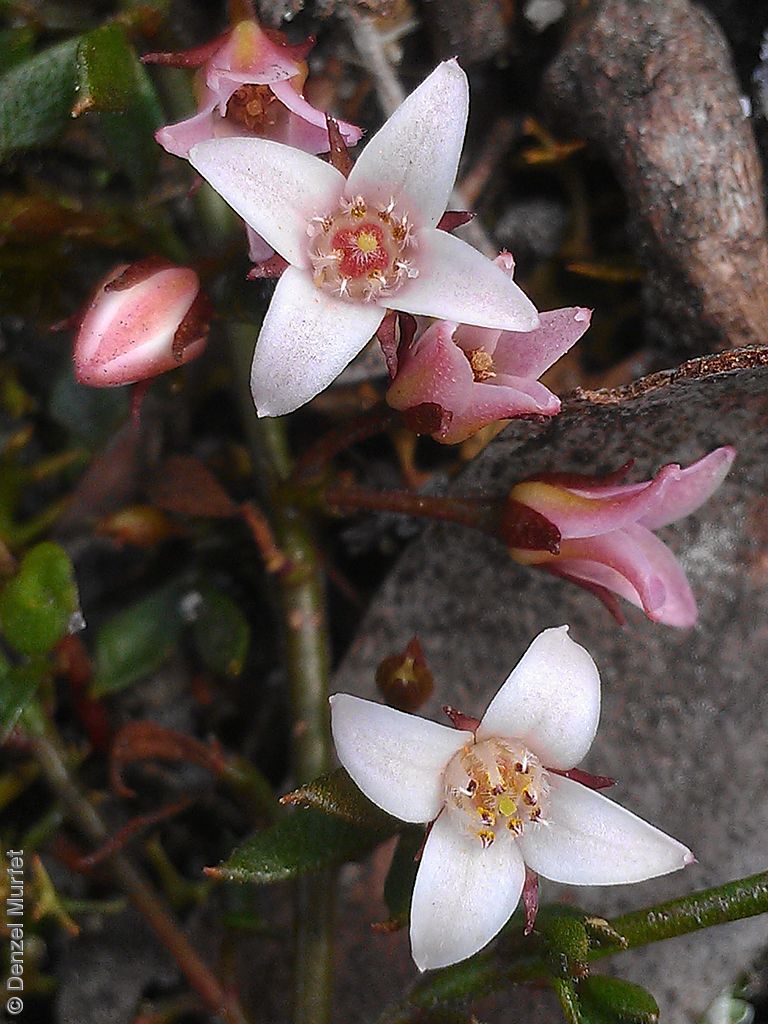
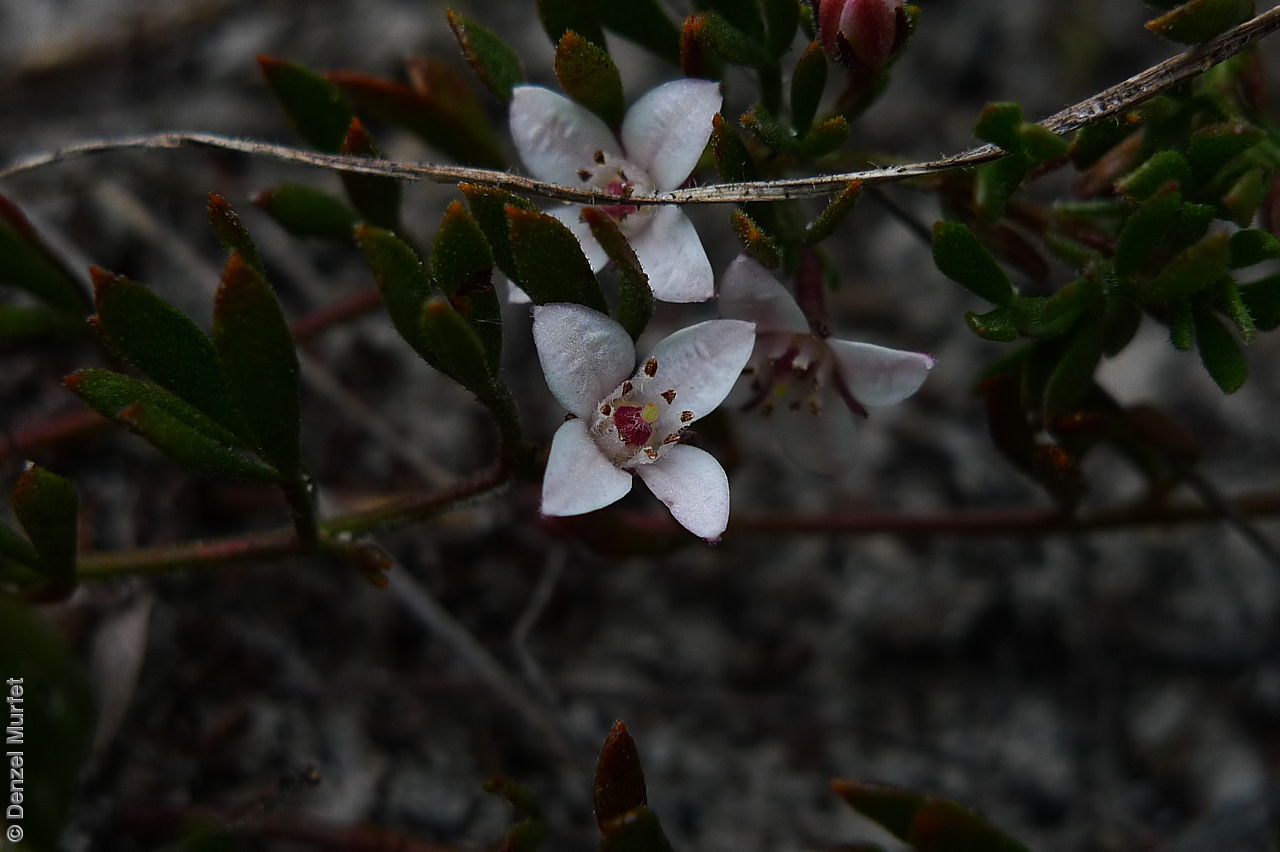
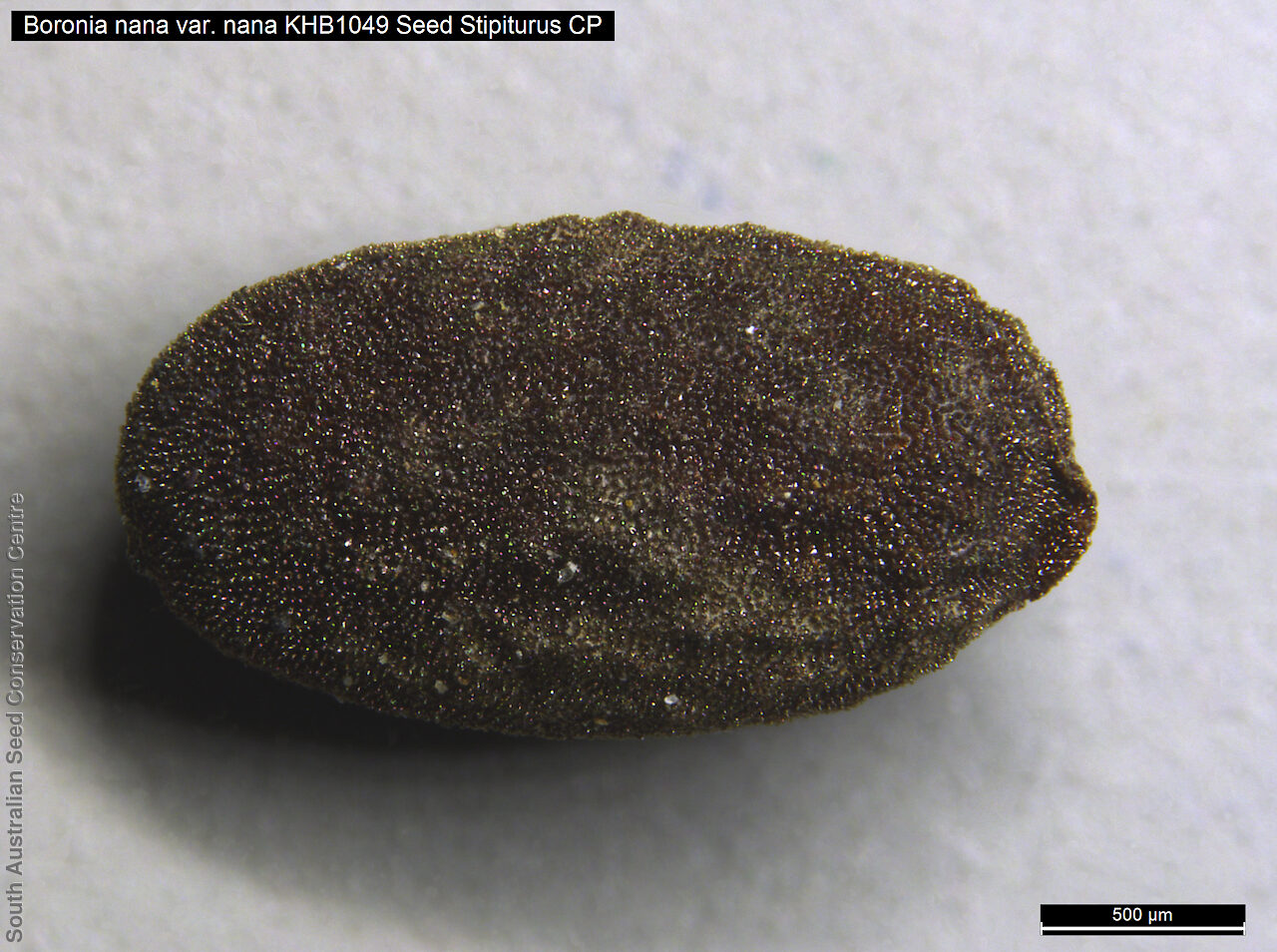
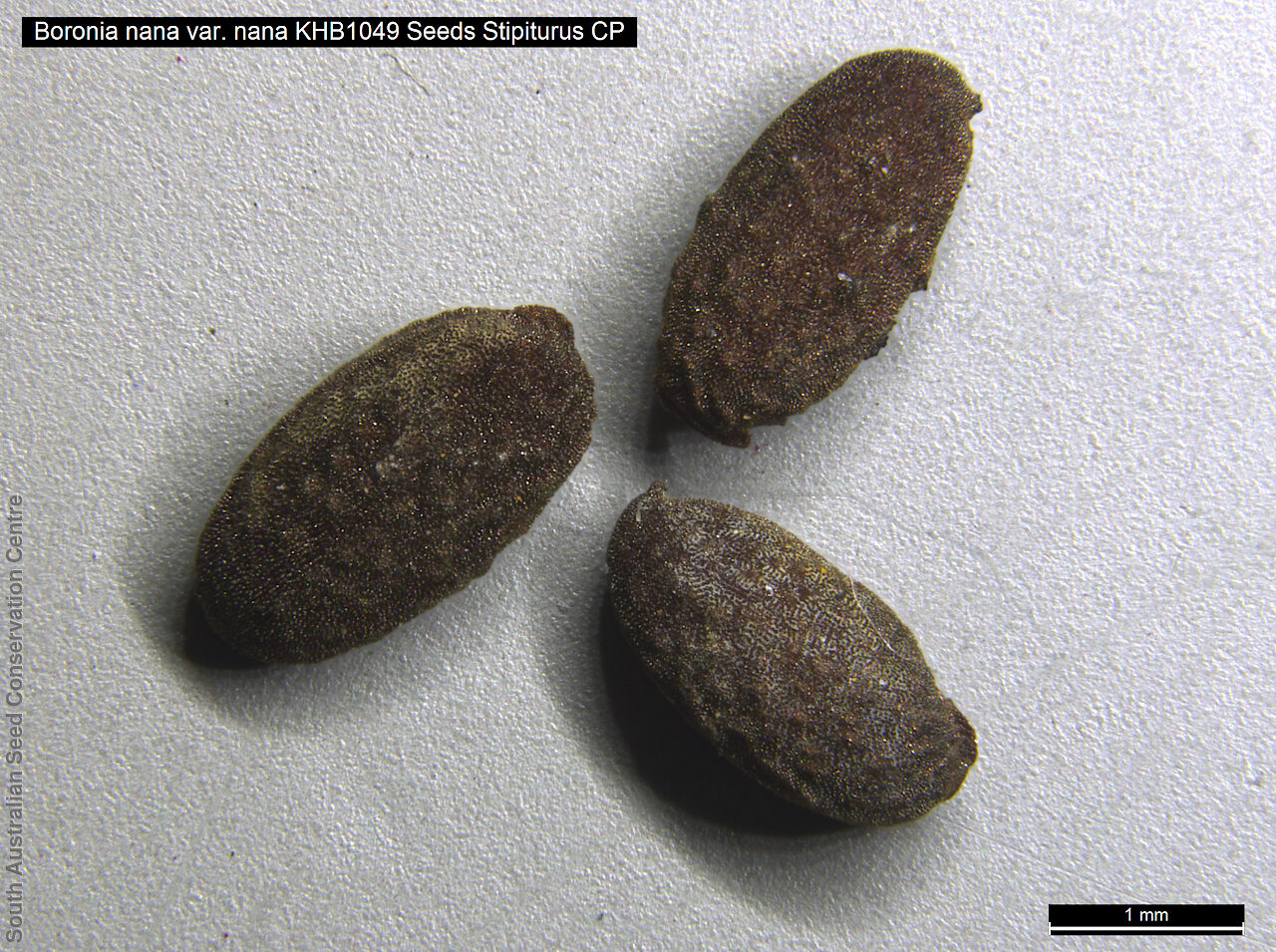


Botanical art
Prior names
Boronia nana var. nana
Etymology
Cyanothamnus is from the Greek words cyano meaning blue, and thamnus meaning shrub. Nana from the Latin 'anus' meaning dwarf, presumably referring to the small stature of the species.
Distribution and status
Found in the southern Mount Lofty Ranges and the South-east in South Australia, growing in heathland and heathy open woodland. Also found in Victoria and Tasmania. Native. Uncommon in South Australia. Rare in Tasmania. Common in Victoria.
Herbarium regions: Southern Lofty, South Eastern
NRM regions: Adelaide and Mount Lofty Ranges, South East
AVH map: SA distribution map (external link)
Plant description
Prostrate or procumbent subshrub with branches to 30 cm long with branchlets hairy between the hairless leaf bases and warty, sometimes rough. Leaves 3–5-foliolate (sometimes lower leaves simple), glabrous or with a sparse cover of straight but sometimes arched hairs. This feature distinguish from the other two subspecies C. nana ssp. hyssopifolia which have simple leaves and C. nana ssp. pubescens which have leaves trifoliolate covered in arched hairs to 0.5 mm long. Inflorescences in clusters of 1-6 white to pink flowers, to 5.5 mm long, petals overlapping in bud, persistent at the seeding stage. Flowering between September to November. Fruits are pale brown, two to four segmented capsule. Seeds are black ellipsoid to 2.5 mm long and 1.5 mm wide with a tuberculated surface. Seed embryo type is linear fully developed.
Seed collection and propagation
Collect seeds between November and January. Collect mature capsules, those that are turning a pale straw colour and contain hard seeds. Place the capsules in a tray and leave to dry for a weeks. Then rub the capsules gently by hand to dislodge the seeds. Use a sieve to separate the unwanted material. Store the seeds with a desiccant such as dried silica beads or dry rice, in an air tight container in a cool and dry place. Seed viability can be low. This species has physiological dormancy and can be difficult to germinate.